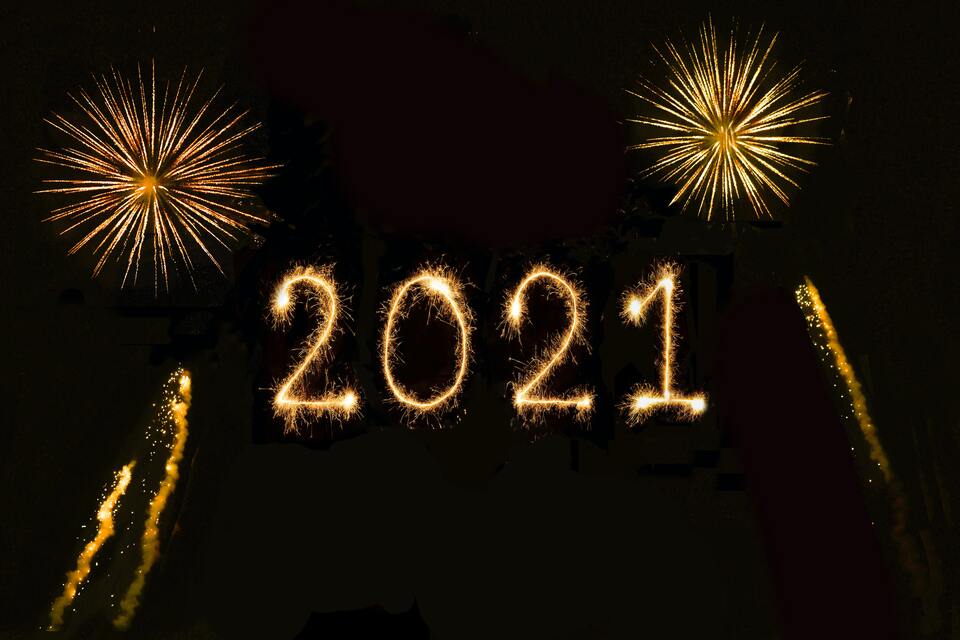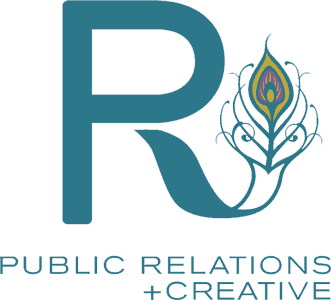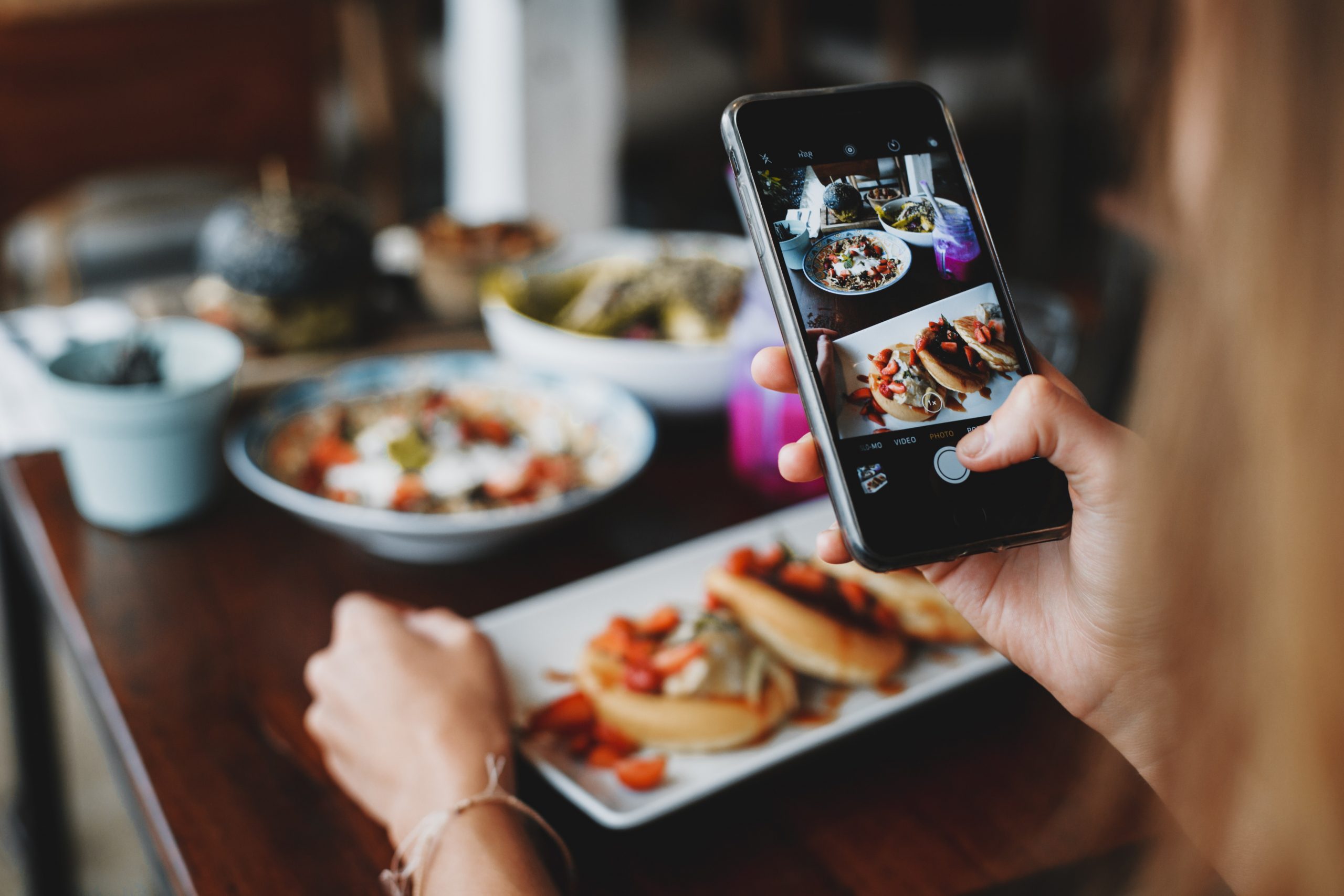PR
4 Tips For Starting a PR Consulting Business

Have you ever thought about starting your own PR consulting business someday? It’s scary, right? And I say this from experience, “Hell, yes.” But that doesn’t mean you shouldn’t go for it. Good PR is needed now more than ever, but how do you get from dreaming to reality? Having done this myself, I’m passionate about helping others become successful entrepreneurs. Check out my tips on starting a PR consulting business.
1. Make Sure You Have the Skills
Having a background in PR, journalism, or even corporate communications is a must. Not necessarily a degree. In fact, I have degrees in Psychology and Philosophy and a Master’s in Social Work, and while the people skills certainly translate it’s my experience that gave me my chops so to speak. Specifically, the years spent running my award-winning website Defining Delicious in addition to working for the Jason Dady Restaurant Group in San Antonio, Bread & Butter Public Relations in Austin, and Bay Bird Inc in San Diego. Many people think PR is just spin and slick talk, but it’s so much more. Lack of expertise is a surefire way to crash and burn.
2. Have Media Relationships at The Ready
Whether you have these media contacts yourself or you hire or partner with someone who does, the success of starting a PR consulting business hinges on these relationships. Sure, you can work the paid media (online ads, paid influencers) and owned media (your website, social media) angles, but that’s more costly. And even if you can get clients to pay an unproven PR consulting business for this, your profits will feel the hit as opposed to the free coverage you gain from news mentions. Not to mention, this earned media (free coverage) is what true PR is really about; you can’t be full-service without it. This means you have to build and nurture media relationships like there’s no tomorrow!
3. Find Your Niche
Sure, the big PR agencies have the bandwidth and the staff to handle clients from almost any industry. But, realistically when starting a PR consulting business that’s just not feasible. Nor is it beneficial for a small business in my opinion. In trying to be everything to everyone you lose some of your value, whereas if you have a niche you can promote your business more intentionally and focus your time on the media relationships offering content in that area. For example, we R a lifestyle public relations agency which means we specialize in brands within industries that include restaurant, hospitality, and retail as well as health and wellness. Our clients come to us because we know their industry backward and forwards and there’s a certain comfort that their PR will be better and more successful because of it.
4. Determine How You Will Work
By this I mean your office. The days of needing a physical location are long gone. Sure, there may be some need to have a conference space now and then but there are certainly options for booking shared meeting space when you need it. It certainly costs less when starting a PR consulting business, but there are other benefits as well. At RPR Firm, we are fully remote which allows us to bring on talent from anywhere. We’re not limited by geography, nor are we boxed in by time constraints of commuting. Plus, in a creative business, the right mindset is everything. I find much more inspiration in the view from my home office than I ever would from a stuffy cubicle!
For more information on R PR consulting business, visit rprfirm.com today!
San Antonio’s Top Influencers and How They Can Help Your Lifestyle Brand
Influencers have become an essential part of public relations strategy, not just for large brands, but for EVERY brand. In fact, the influencer industry is worth $5 to $10 billion according to Social Media Today which is even more amazing because the word itself was just added to the Merriam-Webster Dictionary in 2019. But, regardless of how new, its ‘influence’ should be taken seriously in helping your lifestyle brand to get noticed. Here’s how they can help, along with 10 of San Antonio’s top influencers.
How Influencers Can Help Your Brand
Early on, influencers were primarily celebrities. But celebrity endorsements can be hard to come by and can be expensive. But there are plenty of ‘regular people’ who have built a rapport with their followers as experts on specific topics or in specific categories through their blogs or social media posts, for example. As such they are seen more like trusted friends or peers with credible recommendations on products/services that they actually use. Influencers can help your lifestyle brand by:
- Improving content strategy – With more avenues for fresh content that showcases your brand.
- Improving brand awareness – Through word-of-mouth which still has high engagement even when advertising is too often tuned out.
- Strengthens brand credibility – Because you’re associated with influencers your target audience trusts.
- Creates hype – Influencers are walking-talking endorsements that know how to attract attention.
- Boosts your SEO – With additional links to your targeted keywords.
San Antonio’s Top Influencers
Certainly, you want to find influencers with a strong following, but they don’t need millions to make an impact. Often, it’s those on a smaller scale (less than 500K) who have the most engaged followers which are perfect for lifestyle brands targeting specific niches or locations. Here are our top 10 San Antonio influencers (in no particular order).
1. @s.a.foodie | 274K Followers
San Antonio native Amanda Spencer has won Best Instagram Influencer in the Current’s “Best of San Antonio” reader poll. She posts about food, travel, and more.
2. @quemeanswhat | 9,023 Followers
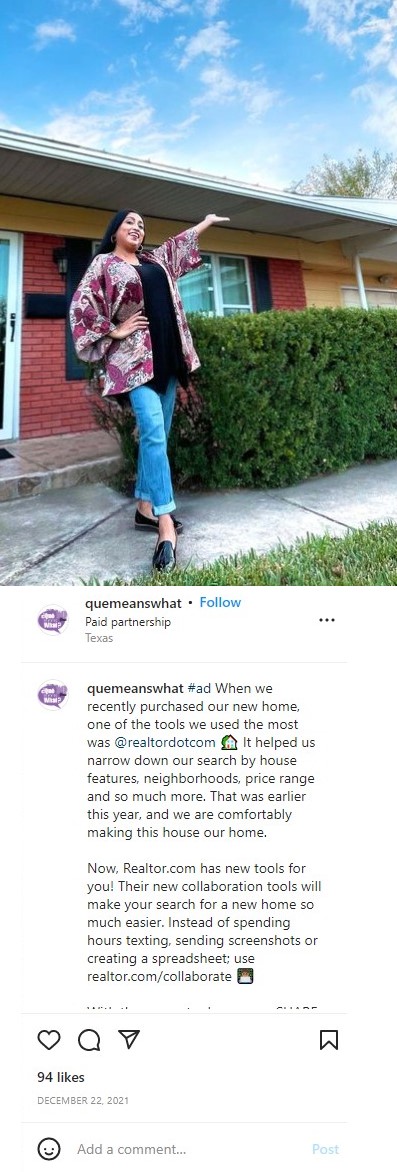
A 7th Generation Texan, Melanie Mendez-Gonzales explores Latino identity in and around San Antonio focusing on education, entertainment, and family life.
3. @stine.eats | 6,989 Followers
Through her gorgeous photos, you can explore local eats and drinks with San Antonio foodie, Christine Wong, who also can’t resist the occasional fur baby shot.
4. @getfitwithashley | 134K Followers
This fitness guru, Army veteran, and mom of three is here with fitness and food tips to help others get fit and be their best selves.
5. @SATX-Rated | 17.6K Followers
Self-described “San Antonio’s Food & Fun Ambassadors,” follow them to learn about all the fun things to do in SA along with where to eat and drink.
6. @sanantoniostephanie | 14.1K Followers
A finalist in MYSA’s "2022 Your SA Readers' Choice Awards" for Local Social Media Influencer, she posts about food, drinks, and fun in San Antonio.
7. @alamofoodie | 36K Followers
Her bio promises “Experiences, bites, booze,” and that’s exactly what you’ll find on this influencer’s Insta.
8. @flicksandfood | 5,457 Followers
Johnnie is always up-to-date on the latest goings on in San Antonio and beyond.
9. @liveitupsa | 30K Followers
This influencer explores all the cool stuff to do in San Antonio, as well as sharing delectable eats and boozy treats with some fashion and art mixed in to boot.
10. @goodtastetv | 14.3K Followers
Emmy-award-winning journalist and one of our fave clients, Tanji Patton, shares food, wine, and restaurant tips not just in San Antonio but all over Texas.
11. @siempre_sanantonio | 13.9K Followers
One of the top TikToker’s in Texas (2,200,000 likes!!), you can always tell when she on your FYP sharing the next spot to check out when you hear “Hey, friends”!
12.@sanantoniomunchies |45K Followers
Come to his page for the tasty food finds and stay for the memes and hot takes.
13. @salovelist |15.2K Followers
From coffee to cocktails, Gabby’s tried it all and shared it on their page. Sometime their chi-oui-nie, Quebec, makes a guest appearance who has their own Insta too, at @badweenie.
14. @socializesanantonio |25.3K Followers
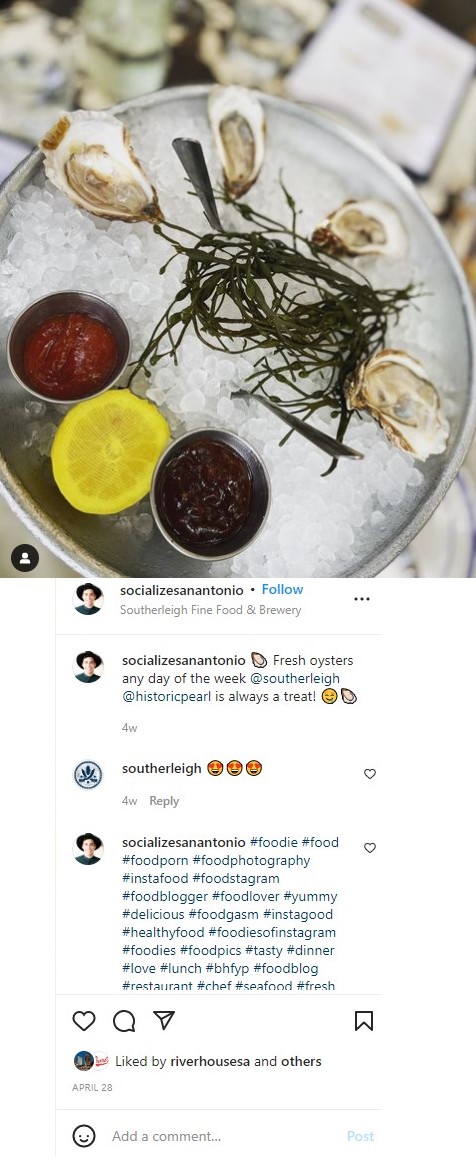
Jesse’s Instagram is puro San Antonio! Celebrating the city’s events and culture through food and fun, he shares all the exciting things happening around town.
15. @jesselizarraras |10.1K Followers
The former Food + Nightlife Editor for the Current and now the Executive Producer at MySA, Jessica has her finger on the pulse of all things San Antonio.
16. @christina_coker | 23K Followers
This mom of four and life and style influencer shares the latest style trends along with tips for staying beautiful and fashionable on a budget.
17. @saraharoundsa | 2,672 Followers
Some of the best spots and best food photography can be found on Sarah’s feed. The San Antonio native knows where to find the hidden gems and local faves.
18. @jazzexploring | 6,787 Followers
Looking for some travel or fashion inspiration? Jaslyn shares her journey’s via IG, also while dressing really cute!
19. @letsbinge | 4,365 Followers
Feel like one of the Castillo sisters with all the shenanigans that goes down on their feed and in Instagram story’s.
20. @twentysomethingsa | 27.2 Followers
Supporting local is what Twenty Something SA is all about! Through socially impactful content they highlighting businesses, creatives and the city’s unique beauty.
For R help with using influencers as part of your public relations strategy, Click HERE to schedule a FREE Discovery Call Today!
Case Studies in Cause Marketing: 3 Examples of How To Do It Right
 Cause marketing is becoming more and more popular among brands. Yes, because they want to do good in the world, but there are also a number of other benefits as well. However, for maximum impact (for your brand and your cause) there are some things you need to keep in mind. Check out these three case studies for examples of cause marketing done right.
Cause marketing is becoming more and more popular among brands. Yes, because they want to do good in the world, but there are also a number of other benefits as well. However, for maximum impact (for your brand and your cause) there are some things you need to keep in mind. Check out these three case studies for examples of cause marketing done right.
The Benefits of Cause Marketing
By definition, cause marketing is a cooperative effort between a for-profit brand and a non-profit for the mutual benefit of both. The benefits include increased:
- Sales for the brand
- Money contributed to the non-profit
- Connection with consumers
- Awareness of the cause
Keep in mind that cause marketing doesn’t have to focus on just national or global causes. It can and should focus on local causes as well.
Cause Marketing Case Studies

These examples showcase some of the recent cause marketing campaigns we’ve done for R clients.
1. Local Moves Studio’s Partnership with NAMI San Antonio
20-year fitness trainer and endurance athlete, Thomas Roe (T.Roe), whose techniques and expertise have benefitted clients all over Los Angeles, and have been featured in People, LiveStrong and Active, brought his passion for training, teaching, and inspiring change to San Antonio, Texas last fall when he opened Local Moves Studio. As part of the grand opening celebration, R team helped Local Moves partner with the National Alliance on Mental Illness (NAMI), San Antonio, to donate all proceeds made from classes during that weekend to the organization in addition to a $1,000 donation from the studio. NAMI was also onsite to offer information on mental health as well as their services.
This cause is particularly important to Roe as his life has been affected by mental illness in his immediate family. In fact, his approach to fitness at Local Moves is unlike any other circuit training because it also fosters community in order to support mental health by having clients partner with a buddy to motivate and keep each other accountable during workouts and outside of the studio. Roe encourages stepping out of your comfort zone not only physically, but also socially so you can meet others in the community and create bonds with each other to show support while working out, as well as through everyday life.
2. The Gentle Barn Turkey Guardian Campaign
This past fall as we approached the Thanksgiving holiday, R team helped The Gentle Barn, a national non-profit animal rescue group, with a campaign asking consumers to protect turkeys rather than serving during the holiday season. Their Turkey Guardian program provides the opportunity to sponsor one of five turkeys – Romeo, Sun, Luke Skywalker, Heather, or Smudge -- for a one-time donation of $35. Other options include sponsoring the entire Flock for a one-time $150 donation, or The Flock Plus sponsorship, a $1,000 one-time donation, which includes a special Zoom event with the founders.
These funds support the organization’s efforts to rescue, protect and provide a safe and loving living environment for a range of severely abused animals at their sanctuaries located in California (Santa Clarita), Tennessee (Nashville), and Missouri (St. Louis). Sponsors also receive a Certificate of Turkey Guardianship, which includes the turkey's bio, a beautiful photo, and interesting facts about the turkey or turkeys they have chosen.
The idea behind this program is to generate understanding about what these innocent animals are really like as most people don’t realize that turkeys are affectionate, intelligent, and very social. It’s part of their unique philosophy connecting their animals’ stories of survival and healing to the personal experiences of underserved and special needs children who have suffered physical, mental, or emotional trauma. By interacting with animals in The Gentle Barn’s programs and taking a hands-on role in their welfare, they learn empathy, trust, and forgiveness.
3. Aramark Uniform Services Corporate Giveback After 2020 Nashville Tornadoes
On the night of March 2, 2020, a line of tornadoes struck Nashville, Tennessee wiping out beloved local businesses, family homes, and anchor institutions in the community. In the aftermath of the wreckage, one of the many buildings destroyed was Aramark Uniform Services. As a result, over 2,400 of their loyal customers in the service industry and health care facilities throughout Middle Tennessee were without clean, essential uniforms.
As part of its commitment to the Nashville community, Aramark continued to service these customers even while rebuilding their local facility by diverting 550,000 pounds of laundry to seven neighboring Aramark facilities to ensure they didn’t experience service disruptions during a time of need. Aramark also assisted the Nashville community in planting trees in the neighborhoods that were hardest hit by the tornado.
As a long-standing member of the Nashville community, Aramark wanted to make sure its customers, employees, and neighbors knew they weren’t forgotten and enlisted R team to create awareness. It’s also why they were determined to rebuild in the same location, bringing with it a range of employment opportunities as the new facility opens in March of 2022.
For more information on how R team can help your brand with cause marketing, click HERE to schedule a FREE Discovery Call today!
So You Think You Need PR?

So You Think You Need PR? What Does That Really Mean and What Are You Signing Up For?
You’re an entrepreneur, a start-up, a small business, or a non-profit and you’ve been told you need PR to take your brand to the next level. But what exactly is PR? And if you enlist these kinds of services, what can you expect? Most importantly, how exactly can PR help your brand?
Here's R take on all these questions.
PR Defined
Most people assume that public relations (PR) is the same thing as marketing, but the two are actually very different. The goal of PR is to influence, engage and build a positive relationship and/or image with your target audience through:
- Corporate communications
- Crisis communications
- Investor relations
- Media relations
- Influencer relations
- Reputation management
- Event promotions
You’ll use tools such as press collateral, editorial placements, social media placements, media and influencer outreach, and list development as well as sponsorship and partnership coordination to do so.
The goal of marketing, on the other hand, is is to build awareness of and to promote/sell your product(s) and/or service(s) through:
- Brand marketing
- Advertising
- Content
- Search engine marketing
- Social media marketing
- Targeted marketing campaigns
- Conference and trade shows
Marketing uses tools such as sales collateral, blogs, websites, email, and direct mail to achieve that goal.
Clear as mud? The main difference is twofold. One, PR is typically not paid and thus requires cultivating and maintaining relationships with media and influencers. And two, as such you lack some control over the narrative with Public Relations, however it is often seen as more credible.
What You Can Expect from a Public Relations Firm
When you enlist a PR firm, they will help you to engage with your audience and maintain a positive public image using their expertise and relationships with media as well as influencer contacts to ensure your message(s) is covered in the right places at the right time. We R a boutique PR firm that has a number of benefits over large agencies including:
- Area of expertise – Boutique PR firms are focused in a particular area of expertise. For example, R firm lifestyle brands including those in the restaurant, retail, hospitality, health and wellness and startup industries.
- Personal touch – Large agencies often woo clients with senior staff and then pass you off to a junior team. With a boutique PR firm, you work with exactly the team you signed on with from beginning to end. What’s more, small businesses usually equal small fish for the large agencies and the amount of time spent on your Public Relations may reflect that. Yet you’re always number one with us!
- Less bureaucracy – The larger an agency is the more bureaucracy you’ll likely find. Boutique PR firms have more freedom to be collaborative, responsive, and adaptable to your needs, more like an extension of your own team. And here’s a secret, many boutique Public Relation firms, like Rs, are run by PR professionals who’ve left large agencies so they could get back to the work they love on their own terms!
- More budget-friendly - Large agencies may charge upwards of $500 an hour, however, boutique Public Relations firms may charge as little as $150 an hour. In addition to hourly billing, you may also have the option of a Public Relations retainer which is a lump sum that you pay for services each month. The amount paid depends on how much work you need to meet your PR goals and your budget – again also tack on overhead costs for larger agencies. R firm is mindful of budget for our clients and, in fact, offers a 6-month program known as Launch which includes developing a brand identify, PR plan and campaign for smaller brands who qualify.
Benefits of PR
There are so many benefits of PR, but at the same time, they depend on your goal(s). That’s why we always start with a Discovery Call because once we get to know you and learn your goals, we can create a proposal with a customized service outline that details the specific benefits of PR for your brand. But, in general, the benefits of Public Relations include:
- Increasing brand credibility
- Enhancing online presence
- Increasing brand awareness and positive brand image
- Increasing profits, sales, and leads
For R help with your PR, learn more about our public relations services. Or, schedule your FREE Discovery Call Today!

R Public Relations Firm has been recognized among the 10 best Public Relations Firms in Austin, New York and San Antonio in 2021 by DesignRush Marketplace.

After evaluating and analyzing RPR’s performance with some of the most prominent brands in the US, the online platform gave the company a spot among the most reputable agencies in San Antonio.
R Public Relations (RPR) was founded in 2008 by Emily Reynolds Bergh, an experienced and seasoned publicist who has worked with top name media companies and secured press in The New York Times, Food and Wine Magazine, LA Times, Esquire Magazine, Texas Monthly, Garden and Gun, Southern Living, and more! RPR has achieved a 90% client retention rate, thanks to the relentless pursuit of opportunity and optimization efforts, and prides itself on being a part of every client's internal team.
In 2020, despite a global recession caused by the Covid-19 pandemic, the company had no layoffs or pay cuts, adopting an “employee first'' policy, and was able to surpass a growth rate of over 200% from the previous year. RPR’s presence has grown from the US into Europe and continues to expand.
DesignRush is a reliable online guide to finding the best professional companies and agencies, categorized according to vertical and area of expertise.
DesignRush evaluates thousands of agencies and is committed to helping brands find the best solutions for their needs. The platform has a listing that allows users to search partners based on clients, portfolios, reviews, pricing structure, and testimonials. This recognition to R Public Relations is one of many that distinguishes the agency and claims its excellence.
DesignRush has also ranked R Public Relations as a Top PR Company in New York and Nashville.

Earned Media vs Paid Media (and Why You Need Both!)
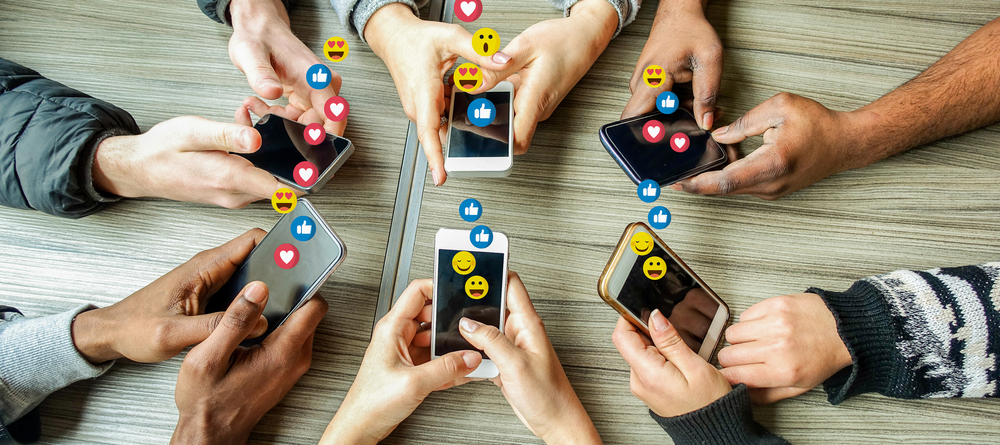
When it comes to cultivating a positive reputation for your brand, promoting your products, services or events and keeping your name top-of-mind in the media, success hinges on the right mix of public relations. That’s right, public relations or PR, isn’t as cut and dry as you may think. There are actually different types of PR – specifically, earned media and paid media – and each uses different strategies to help you achieve your goal. When should you use earned media vs paid media? R approach is to use both. Here’s how the mix benefits your brand.
Earned Media vs Paid Media
First, let’s define each. Earned media is likely what you typically think of when it comes to PR and it includes:
- Mentions in the news as well as reviews
- Positive comments from customers on social media
- High organic rankings on search engines
This word-of-mouth PR is the best type, but it’s also the hardest to achieve. As the name says, you have to earn it through hard work on your end by creating exceptional customer experiences and on R end through expertise in social media strategy as well as content development plus the relationships we nurture and develop with media contacts.
Paid media is exactly as it sounds; paying to make your brand more visible through:
- Social media advertising
- Influencer marketing
- Pay-per-click (PPC) advertising
This is becoming increasingly popular as a way to supplement earned media because you have more control and can target the specific audience(s) you want to get your brand in front of. But again, having the right expertise in these areas is crucial to keep you on point and on budget.
Achieving the Right Mix
Unfortunately, there’s no set formula that can tell you how much earned media vs paid media is necessary to achieve your goals. Both have their own pros and cons.
Earned Media Pros
- Increased credibility
- Heightened brand awareness
- Expanded reach
Earned Media Cons
- Considerable time and effort
- Can be difficult to measure
- Running the risk of negative publicity too
Paid Media Pros
- Control over your message and targeting
- Easy to measure
- Quick results
Paid Media Cons
- Can be costly
- Lacks the credibility of earned media
- Managing multiple platforms can be challenging
To achieve the right mix for your brand, you have to balance the pros and cons of each type of PR with your own resources, budget and goals.
R Team Can Help
R team has the PR expertise in both earned media and paid media, and experience in industries such as restaurant, hospitality, retail, health and wellness, business, non-profit to help you determine just the right mix for your brand. It all starts with a discovery call where we take the time to get to know you, your brand and your goals firsthand. From there we’ll create a proposal with a customized service outline with the earned media and paid media balance that gives you the greatest PR benefit.
Click HERE to schedule a FREE Discovery Call today!
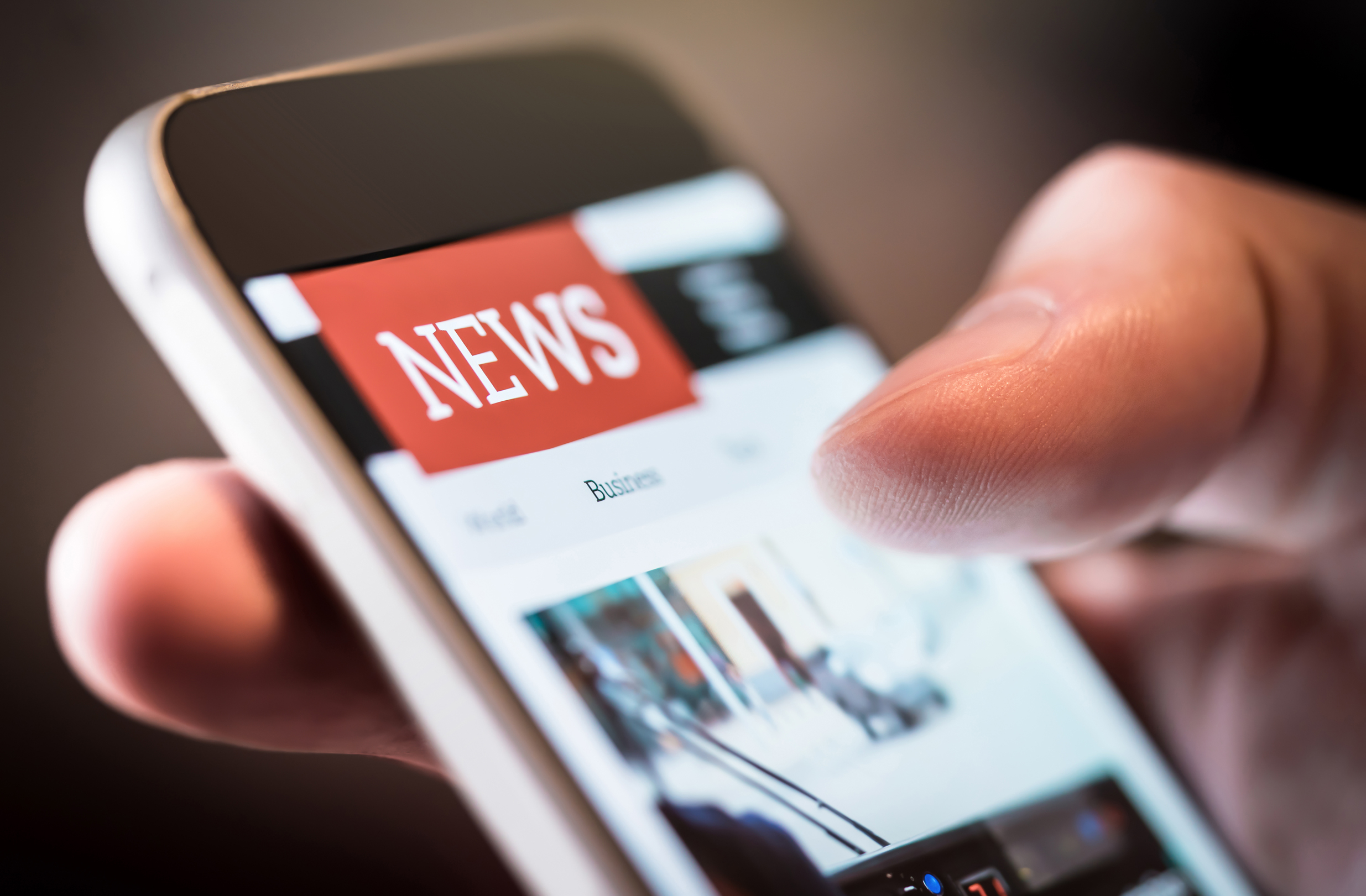
Is PR Too Pricey? R Common Cost Questions Answered
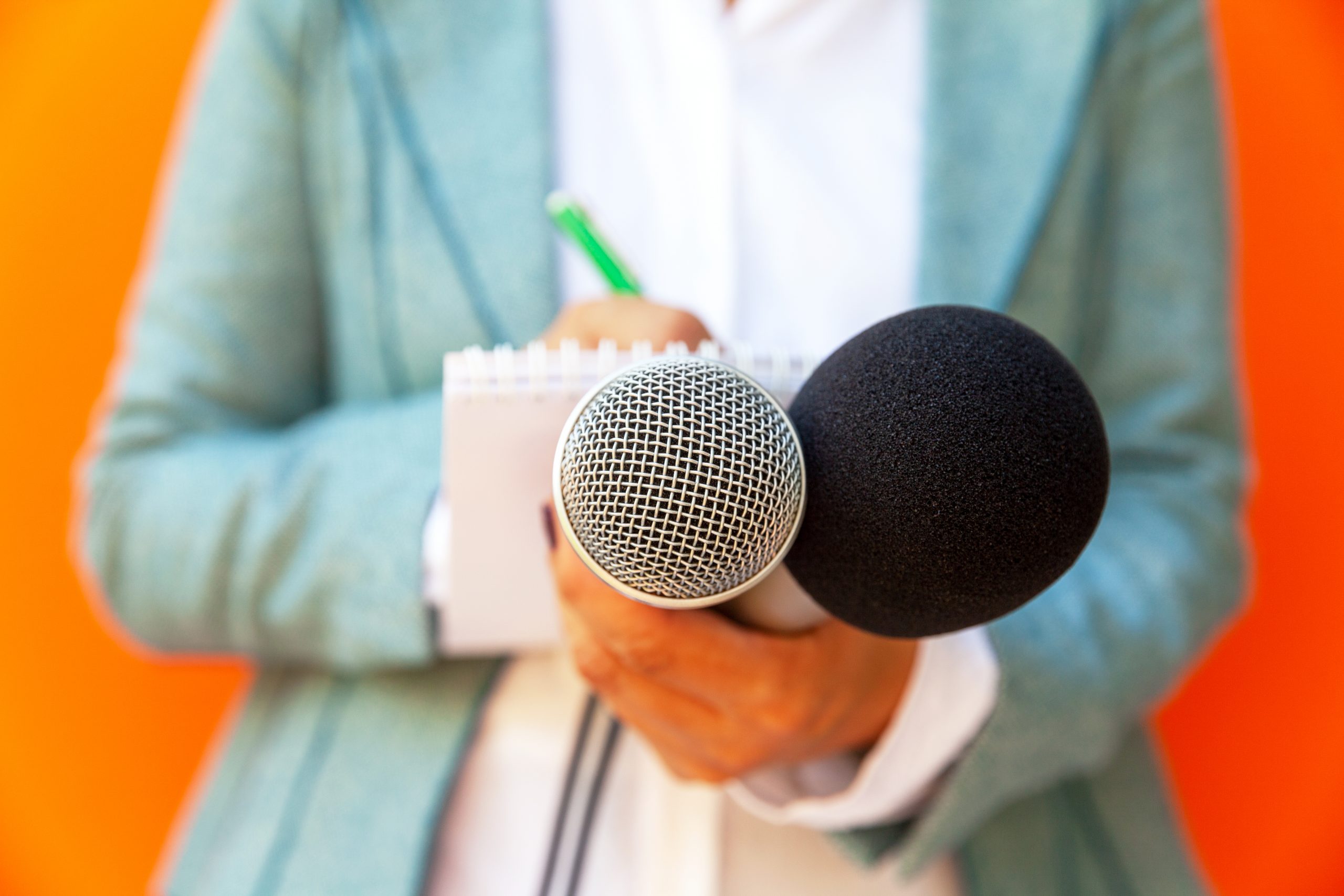
With public relations (PR) services, there can be a bit of a learning curve when it comes to pricing AND value. The saying “you get what you pay for” certainly holds true here as PR can offer tremendous benefits to your brand. But before we get to that, we’ll answer some of our most commonly asked questions about the cost of PR.
What is a PR retainer?
A PR retainer is a lump sum that you pay to the public relations agency or professional each month for their work. The amount paid depends on how much work you need to meet your PR goals and your budget, so it’s important to specific about both in your preliminary communications. Traditionally the cost of PR retainers can be from $1,500 to $10,000 a month, depending on the scope of work and project/client needs.
How much do PR agencies charge hourly?
Large PR agencies may charge upwards of $500 an hour for their time. However, smaller agencies or consultants may charge as little as $125 an hour. The average hourly rate at a larger PR agency is currently between $150-$250 per hour.
What does that cost cover?
- Pitching to major media outlets
- Media lists and sharing sources that have been cultivated by the team of experts
- Copywriting (pitching ideas and editing them)
- Supporting a team (from initial pitch to researching and editing there is likely a team, of people that budget will cover)
How do I choose the right PR agency?
That’s a tough question to answer because “right” can be different for each brand. However, these tips can put you on that path:
- Decide on your goals first. What is your vision? You need to know this before someone can sell your story.
- Consider all your options, such as hiring a PR agency versus hiring someone who may solely focus on SEO as an example.
- Determine your budget for PR.
- Decide what size PR agency is right for you. Remember that smaller budgets may mean less attention in large agencies while you may be the “bigger fish” for a boutique PR agency.
- Be specific during the proposal process. The better you vet, the better the result will be. For example, ask that those who will be on your account be involved from the beginning so you can gauge capabilities and chemistry as well.
What would I get through a PR agency that I couldn’t with a marketing firm?
Often, marketing firms provide a variety of services, including social media, digital media, advertising, and, of course, PR. However, PR differs from those mediums as it is earned, not paid. Hence, it requires different expertise, not to mention the time and ability to cultivate relationships with media and influencers. Large marketing firms may have that bandwidth (and you’ll pay for it), but the small ones won’t necessarily. That’s the advantage of going directly to a PR agency. For example, R agency has incredible direct media contacts and expertise in leveraging those to garner coverage that creates a positive image and credibility for your brand. It’s our (R) specialty!
The Value Behind the Price of PR
R founder, Emily Reynolds Bergh puts it beautifully, “When it comes to the cost of PR and pricing, we are a small business; not a large PR agency. Yet oddly enough we provide our clients with more direct contact to experienced staff AND charge less than a large firm. We have found that our value to a business is second-to-none when it comes to delivering a solid PR plan and direct relationships. However, we charge rates that are also fair to the market. Our retainers are based on the work we do weekly to provide those R-esults.”
She goes on to say, “As a small business, we are mindful that not everyone can spend big when it comes to PR. So, we also have lower budget options in which clients can apply. One is based on promoting a specific project. The other is R Prosper Program, which is designed to support solo entrepreneurs for six months by developing their reach and brand identity and a PR plan and campaign to launch them into the market in which they seek to connect. The end game is long-term relationships, not just a mass press release. And that provides lasting value for your brand (and us).”
For R help with your PR, learn more about our public relations services. Or, click HERE to schedule a FREE Discovery Call today!
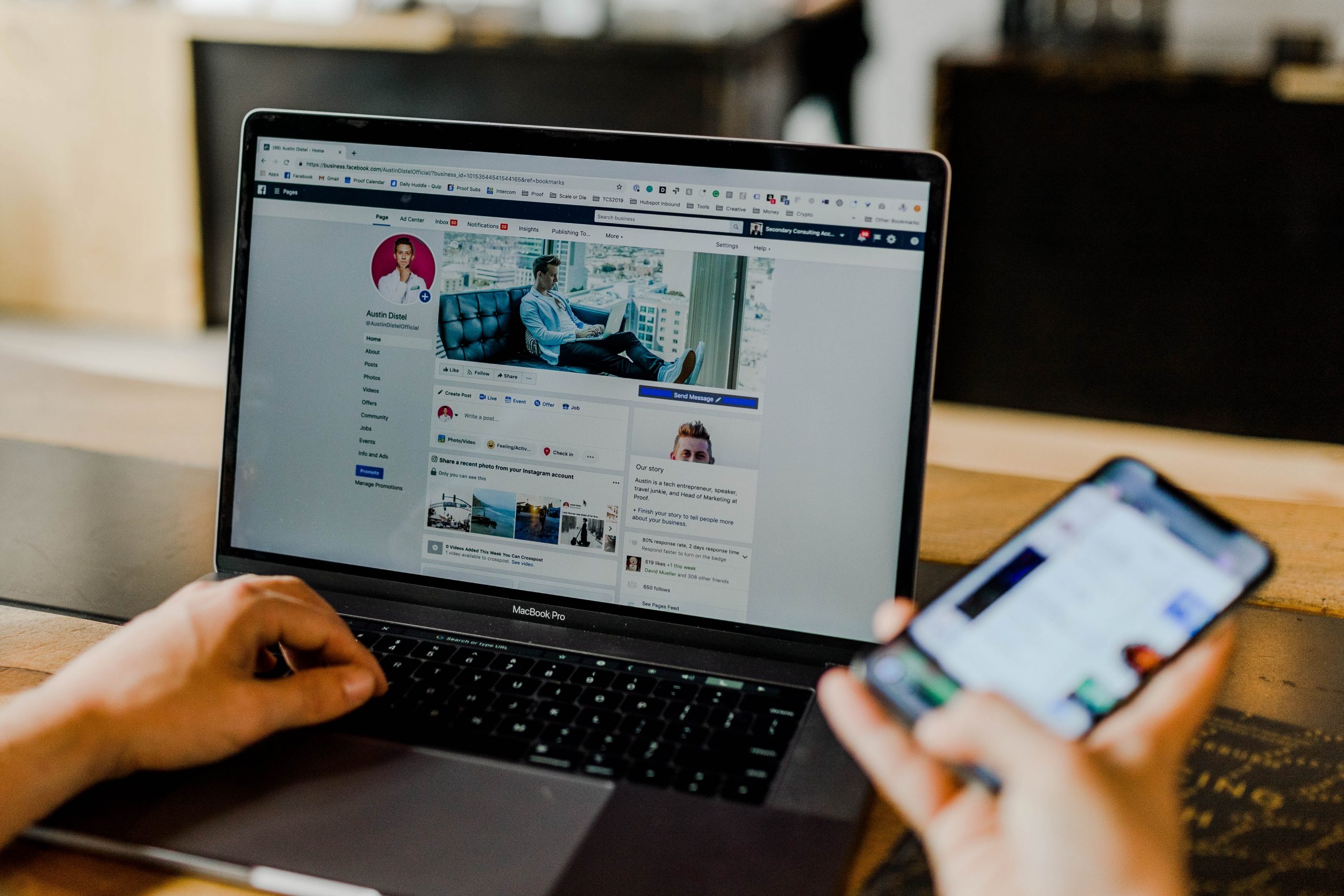
Influencer Marketing: How Social Media’s Influence on PR Benefits Your Brand
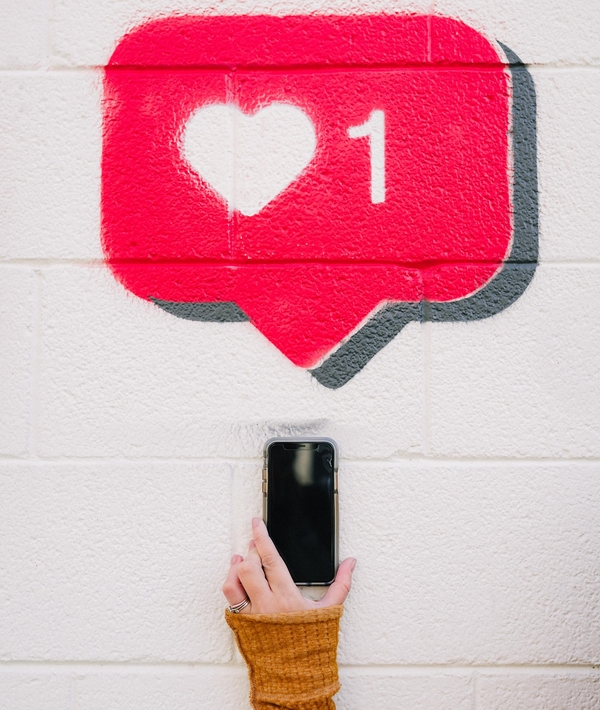
Gone are the days of painstaking research to build accurate media lists, of phone pitches, of basing announcements on publication dates, and of waiting, sometimes for months, to see if you were published via press clips received – gasp – by mail! As social media has evolved, it has elevated PR right along with it to the cheers of us professionals and the benefit of the brands we represent. So what is influencer marketing, and how does social media’s influence on PR benefit your brand? Here’s how.
The Purpose of PR
The Public Relations Society of America (PRSA) defines PR as “a strategic communication process that builds mutually beneficial relationships between organizations and their publics.” You do this by influencing, engaging, and building a positive relationship and/or image with your audience.
Many confuse PR with marketing, but it’s actually quite different. One big difference is in the amount of control you have over the narrative. In marketing, you pay to place an ad with your message; in PR, the amount of coverage, and in essence, your brand’s perception depends solely on your access to and/or relationship with the media. Or, at least it did…before social media.
Using Social Media in PR
Essentially, social media helps us to break down the invisible wall that once stood between brands and their audience(s). It’s no longer just about going through the media with your story and praying for the best. Social media can help you to meet your brand’s PR goals by:
- Working with Influencers – These people give your brand a voice in a way neither you nor a media story could do on its own. Influencers have huge followings that you can tap into to promote your products or services and help with reputation management.
- Social Listening – PR was more reactionary in the past, but with social media, you can keep your finger on the pulse of public perception of your brand. This enables you to proactively respond to any issues that might come up and better understand your customers in general.
- Using Your Platform(s) – Again, it’s about controlling the narrative as best you can. Social media can help you do that much more swiftly, if not immediately when necessary. Today’s news cycle is 24/7, so getting your story on social platforms can also influence the angle of media coverage as journalists do their share of social listening as well.
- Creating Real Relationships – Social media allows you to engage your audience directly with content that’s not only newsworthy but also important to their needs and where they are in the sales cycle. Think blogs, how-to guides, FAQs, and even related content that ties with your brand that could help them.
- Improving Media Relations– Social media is an integral part of PR now, but it doesn’t replace the importance of good media relationships. It can make that easier, however. Most journalists are active on social media and publicly list their handles. You can use this to learn more about their beats, when they need resources, how they prefer to work, as well as their personal and professional interests. Depending on your industry, you could include bloggers in this as well!
All this being said, be careful with a do-it-yourself PR strategy. It’s certainly easy enough to post, but appropriate messaging, knowing how to work with influencers and media, social listening savvy, and the ability to effectively measure results is key.
R team has extensive PR experience, and we’d love to help your brand. See how by clicking HERE to schedule a FREE Discovery Call Today!

4 Reasons a Crisis Communications Plan is Essential to Any Business
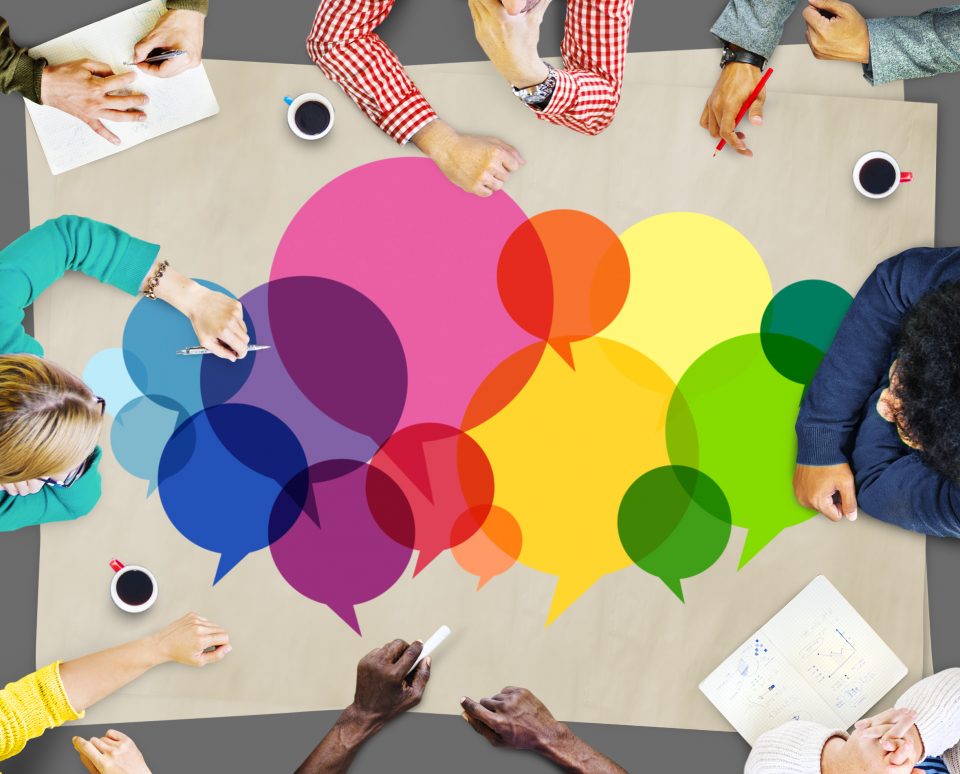
Although we’re well into the new year, it’s safe to say we’re probably all still a little shell-shocked from the craziness of 2020. Not just personally but in business as well. Sure, we’re optimistically planning ahead, but if there’s ever been a time to take the familiar idiom, “hope for the best and prepare for the worst” to heart, it’s now. R view is that having a crisis communication plan is a key to doing just that. Here’s why.
What Is A Crisis Communication Plan?
Essentially, a crisis communication plan is your strategic approach to responding to an unanticipated event that could disrupt your business operations and/or damage your brand reputation. It could be a product recall, customer injury, employee misconduct or a security breach. But natural disasters and, as we’ve recently learned, pandemics can certainly qualify as a crisis for businesses too!
Why Crisis Communications is Essential to Your Business
Quite simply, s@%t happens! You can think of a crisis communications plan like insurance in a way - a safety net that’s there for you just in case. When navigating your business through the unexpected, here’s why a crisis communications plan is essential:
- You won’t be caught off guard – When a crisis hits, time is essential. The longer you take to respond the quicker trust in your brand erodes, or at the very least, confusion will keep customers away. With a crisis communication plan in place, you’ll be able to provide transparency and the most appropriate messaging right away.
- You’ll be able to focus on resolving the crisis – In a crisis, it’s all hands on deck, right? Making it nearly impossible to prepare your communications plan and manage the crisis effectively at the same time. By preparing ahead of time, everyone knows their role in communicating, what steps to take and who to communicate with, freeing up the rest of your team to deal with the crisis itself.
- You’ll be able to control the narrative – One thing we in the PR industry know, is that the first message that’s out there is the stickiest, so to speak. It’s so much harder to change perception than to drive the message initially. Trial by social media is all too common these days and an effective crisis communication plan can help you get the right message to the right people instead of the wrong one going viral.
- Done right, you could improve your reputation – Warren Buffet once said, "It takes 20 years to build a reputation and five minutes to ruin it.” Yikes, but true. On the flip side, as we’ve seen over the last year, businesses who are authentic, honest and open the lines of communication have been the ones who have thrived in spite of the circumstances.
Check out R Take on Crisis Communications During COVID-19 and Beyond for tips that can be applied to any unanticipated situation. Or, click HERE to schedule a FREE 15 min Discovery Call and let’s get started on your crisis communications plan together!

R Marketing Plan Steps for a Successful New Year

It's a new year and that means you should be doing your marketing planning NOW. With last year fresh on your mind and the promise of this year ahead, this is the perfect time. Plus, most businesses are slower at the beginning of the year giving you more opportunity to reflect and plan. Not to mention trying to play catch-up later in the year can really limit your options for business growth. So, with all systems go, R tips can help you successfully map out your marketing plan steps.
Marketing Plan Steps to Include
Throwing it against the wall to see what sticks is as bad of an idea for spaghetti as it is your marketing. You must be strategic, or much like the spaghetti, you’ll just have a mess. Instead, R marketing plan steps include:
- Know who you are – We’re talking about your brand as it’s the foundation from which you will build your plan. Be able to answer these questions clearly: What do you do? What are your products/services? Who is your target audience? What is your promise to customers (value proposition)? What sets you apart (your positioning)?
- Identify what you want to do – With your brand identity firmly cemented you can begin identifying marketing objectives. Drive leads, convert more leads to customers, increase awareness, upsell or cross sell customers, launch a new product or service, and/or increase customer satisfaction are common ones, but here’s the key: you have to make it quantifiable to be able to measure success. Here’s another key: you can’t do everything, pick two or three to focus on.
- Take stock – This is an often-overlooked step but before you begin any new marketing campaigns, it’s important to take stock of what you’ve already done or are doing currently. Look at your social media, content marketing, SEO, ads, and public relations activities with the goal not only to avoid duplication of effort but also to see what you might improve. Also, make sure to perform a competitive analysis to get a good handle on your competitors’ strengths and weaknesses.
- Determine how you’ll get there – Now for the fun! What tools will you use to achieve your marketing goals? There are endless options available, but this is where a solid understanding of your target audience(s) comes in as quite simply, you need to be where they are. What’s more, keep in mind those tools may change throughout the sales cycle. For example, social media may pull in leads while email helps you to nurture them. Your content will likely also need to change throughout the sales cycle so you’ll need to flesh out what message to promote when.
- Find out how you did – We talked about the importance of quantifiable goals above and this is where that really comes into play. Google Analytics and Search Console are ideal to measure website traffic; where it’s coming from, visit length, and conversions. You can measure social media through the individual properties (Facebook, Twitter, Instagram, etc.) and can measure email metrics through your platform too. Or, tools like Hubspot can bring it all together. For PR, media impressions are key.
More on Measuring Your Goals
Not only is it important to measure the results of your marketing plan based on your goals, but you need to do it on an ongoing basis! So many businesses neglect this step. A marketing plan isn’t something you can set and forget. Success depends on your ability to optimize throughout the year as you learn more about what works and what doesn’t.
Leave it To the Experts
This can be overwhelming - we get it! Not everyone has a dedicated marketing department to take this on and for many of our clients, marketing is not their area of expertise. You want your marketing dollars to pay off, but not at the expense of what you need to be focusing on – running your business! That’s where we come in!
R goal is to help clients in industries such as restaurant, hospitality, retail, health and wellness, business, non-profit and more to achieve theirs through:
- Marketing Strategy and Campaign Creation
- Public Relations
- Social Media
- Event Management
- Content Marketing
- Creative Services
- Analytics
For R help your marketing plan, click HERE to schedule a FREE Discovery Call today!
